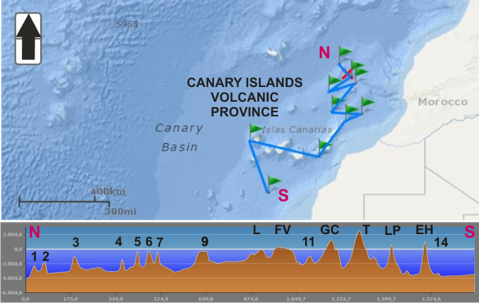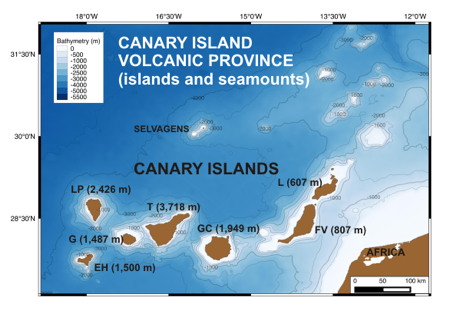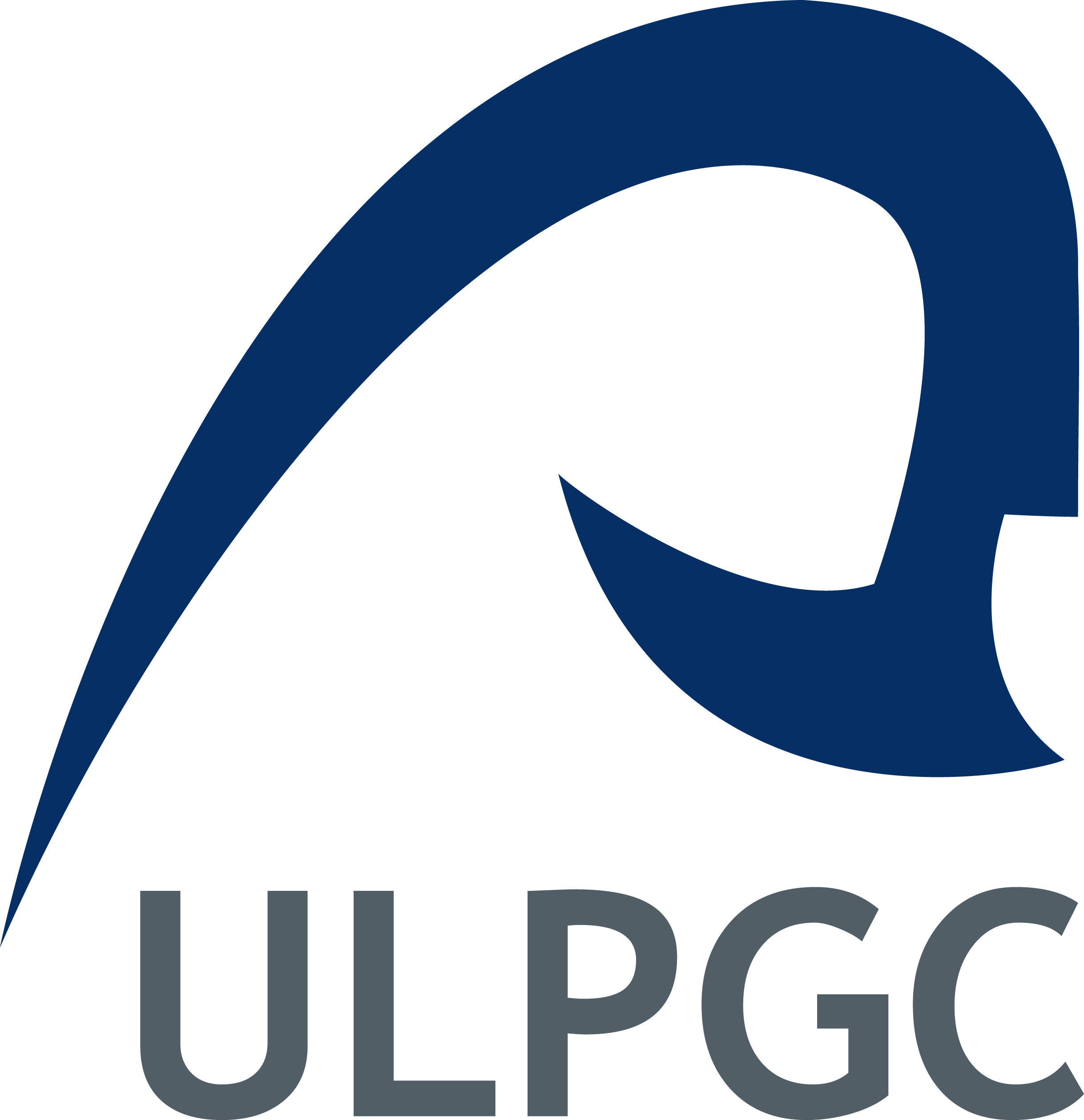Ph.D. Program in Oceanography and Global Change at the Canary Islands, Spain
The geological knowledge of the Canary Islands volcanic province (islands and seamounts) shows a twofold interest, namely, both scientific and economic. Islands and seamounts are placed over oceanic intraplate geo-tectonic environments, and owe their origins to mantle-related igneous processes. Also, a set of sedimentary, biogeochemical and hydrographical processes occurs on these marine geological edifices. A variety of deep-water and coast-related ecosystems show enhanced geodiversity and biodiversity, and thus being worth to become protected areas. Besides, coastal Geosites on Gran Canaria Island, as well as marine protected zones on three Canarian seamounts (Conception Bank, Amanay and El Banquete) have been studied and characterized for the last years from a geological point of view by our research group. This geologic heritage offers educational, scientific and touristic interests, in addition to a great environmental value since they are protected by different national and international figures. Also, an economic interest remains due to related geo-resources (e.g.: sand and gravel, solar salt, methane hydrates, oil and gas, phosphorites, ferromanganese crusts and nodules, etc.) and bio-resources (e.g.: fisheries).
This research topic is related to different branches of knowledge as Volcanology, Mineralogy, Petrology, Geochemistry and Regional Geology. Several research projects have been conducted so far, concerning mineralogical, petrological and geochemical studies of the Basal Complex-Submarine Stage of Fuerteventura Island (alkaline plutonic and volcanic rocks, and carbonatites); alkaline Declining Stage of Gran Canaria Island (rhyolitic, trachytic and phonolitic cone sheets, lava flows and ignimbrites) and Volcanic Rejuvenation Stage of Gran Canaria Island (igneous rocks of Roque Nublo y Post Roque Nublo Groups). These magmatic rocks have not only scientific interest but also economic interest as raw materials (aggregates, cement additives, ornamental rocks, industrial materials, Rare Earth Elements deposits, etc.). Besides, three particular Canarian seamounts - Conception Bank (70 km NE of Lanzarote Island), El Banquete and Amanay seamounts (20 km SW of Fuerteventura Island) - have been studied the last years in order to broadly characterize samples of igneous rocks (i.e.: plutonic, subvolcanic and volcanic rocks), sedimentary rocks (e.g. limestones and ferromanganese crusts) and non-consolidated deep-sea sediments. Furthermore, a multi-technical approach was applied concerning several disciplines: deep-water sediments geo-characterization (i.e.: grain-size, grain provenance, carbonate and organic matter contents, microscopy, mineralogy, petrography, geochemistry), also igneous and sedimentary rocks geo-characterization (i.e.: petrography, mineralogy, geochemistry). Hence, a number of methods was required for these purposes (e.g.: dry sieving, calcimetry, petrographic microscopy, scanning electron microscopy (SEM), ICP/ICP-MS, electron microprobe analysis (EMPA), powder X-ray diffraction (XRD) procedures, Raman spectroscopy, among others).
In both scientific and economic terms, interdisciplinary studies of these marine volcanic mountains (islands and seamounts) open up a wide range of opportunities for new national and international research projects in the future.
 |
 |



